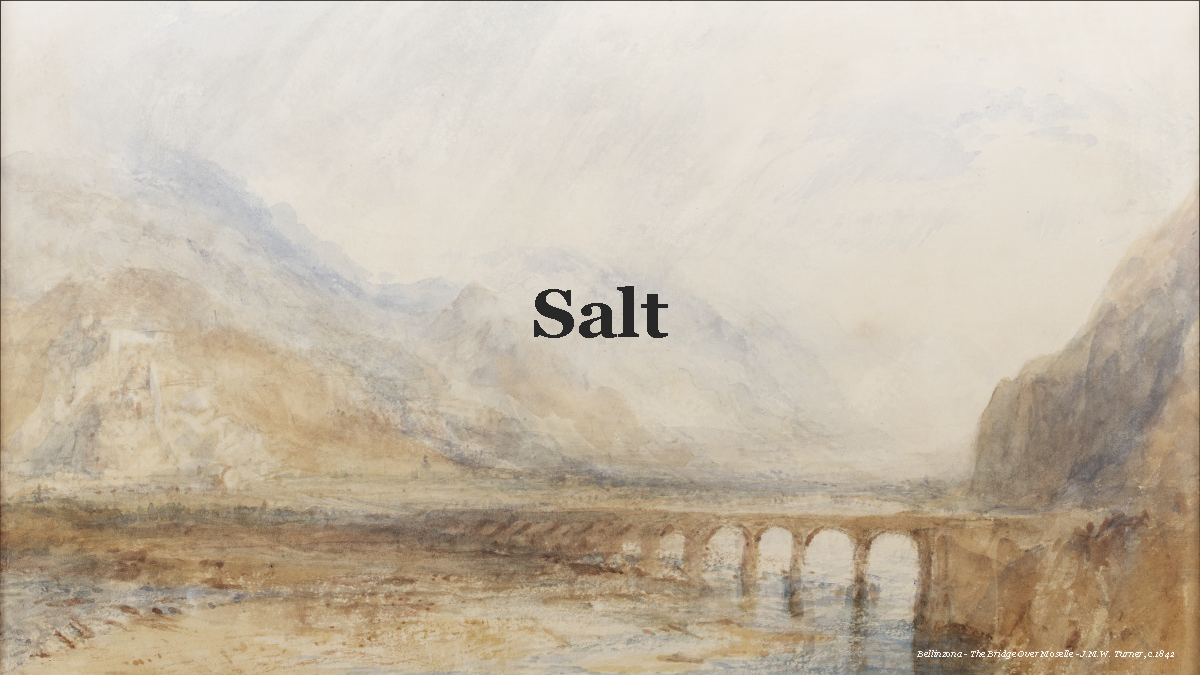Strategic Design thinker-doer based in NYC; decoding value and charting pathways to collective success is what excites me.
Value and impact must be distributed in their nature in order to be sustained. Individuals, organizations, communities, and cultures don’t exist as silos; they co-exist as parts of a coherent whole, that is organic, connected, and alive, each holding the power to make or break a system.
Managing the efficacy of funding over time - how does an impact-focused org. introspect and continually improve?
For City Parks Foundation, NYC
Credits: Salt Collaborative
Salt is a think tank and consultancy focused on real and meaningful change, working at the intersection of design thinking, organizational design and management, and sustainability.
The City Parks Foundation is dedicated to invigorating and transforming parks into dynamic, vibrant centers of urban life through sport, arts, community building and education programs for all New Yorkers. Through a presence in over 300 parks, recreation centers, and public schools throughout New York City, the City Parks Foundation reaches over 275,000 people each year.
The City Parks Foundation worked in collaboration with Salt to investigate and articulate key parts of the foundation’s vision. This process involved taking a nuanced and granular view of the parks and open spaces ecosystem, the challenges and opportunities therein, and a study of the foundation’s own organizational landscape.
The City Parks Foundation and Salt collaborated to develop a new conceptual framework to understand the impact of the fund’s work and re-invest learnings into improving the fund’s work over time.
Peruse | Vision & Purpose + Mapping the ecosystem
Scroll through the slideshow below…
Peruse | The Impact Frame | What makes impact assessment meaningful?
Scroll through the slideshow below…
Learning to listen: A pathway to designing insight-driven businesses
For Mahindra & Mahindra Financial Services Ltd.
Credits: Idiom Design & Consulting Ltd.
The project emerged from an eight-week engagement with the client, aimed at imparting Design Thinking capability to high-potential employees who constitute the future leadership of the organization, resulting in new ideas for consumer-centric businesses that were socially inclusive, with high potential for scale and impact.
This, the second phase of the engagement, had a dual purpose; detailing, development, and validation of value propositions and business models for said business ideas, with the intent of making them pilot ready, while undertaking a transfer of knowledge to the participant team, through deep facilitation of business design methodology.
As project lead, I structured the business design methodology. As an exercise, this was a mix of curation, adaptation, and creation, drawing on proven tools and methods, such as Bill Aulet’s Disciplined Entrepreneurship Model and Strategizer’s Canvasses, while also creating customized thinking and design tools where necessary.
Hyper-local circularity for environmental & social impact
For Interface Inc., Atlanta, GA + Bangalore, India | 2016-17
Credits: Idiom Design & Consulting Limited
Driven by its founder – Ray C. Anderson’s vision, Interface Inc., the world’s largest and foremost manufacturer of modular carpets, is on a long running mission to reduce the negative impact its product has on the environment to ‘Zero’. Aptly titled – ‘Mission Zero’, the program, in addition to process innovation and a gradual but comprehensive shift from linearity to circularity at all levels, runs Re-Entry programs globally, that focus on the re-use and re-purposing of their product, by installing business structures that create livelihood for marginalized groups of the region. For the activation of the Re-entry program in India, Interface partnered with Idiom Design & Consulting, where I led the project.
The project was selected as a finalist at the Lexus Design Awards India 2018 in the Design Thinking Category.
Reviving a business through brand, service, and culture
For DFPCL, India | 2016-18
Credits: Idiom Design & Consulting Limited
Ishanya, the country’s first, and by scale, the country’s largest home specialty mall, conceived as a one stop destination for all things home, had undergone a slew of changes over a span of 10 years, in the pursuit of a differentiated experience and a distinct identity. Somewhat ironically, as a result, the mall, ten years in, did not stand for anything unique.
The conflict between its general perception as a ‘mall’, and its somewhat niche actual offering, created disparity in expectations, whereby people visited seeking a ‘mall experience’, but found a specialized, big ticket category shopping center, without the typical mixed retail landscape or too many avenues for meaningful engagement.
This caused portions of the expansive space to fall gradually into disuse, with trickling footfall. Retailer-tenants, thereby, exercised liberty in promoting their respective brands as they saw fit, across various pockets of the space. Factors such as these led to a somewhat non unified experience, with navigation and general shoppability being areas of concern.
The project sought to leverage Ishanya’s unique offering mix and open, outdoor physicality to re-invent the ‘role of the mall’ for the city and its people, through a complete transformation of the Brand, birthing an inspired and layered Experience, reinforced with relevant and elevating Service offerings, year-long engagement through curated Events, as well as a new internal work Culture to help the management internalize and deliver on the brand’s promise.
A brand is more than a set of promises and claims. It is a culture. A true brand transformation then, is a cultural shift for an organization. In this case, a customer-facing business carried the baggage of a large, slow-moving B2B corporate culture. Standardization, risk-aversion, and process-obsession were assets for the parent company, but a customer-facing experiential business needs agility, innovation, and a bias for action.
Facilitating the active practicing of desired behaviors led to an internalization of the new values and beliefs by the team. The method enabled the team to recognize immediate changes in both individual capacity and as part of a team, cementing the new beliefs and values in the process.




































































